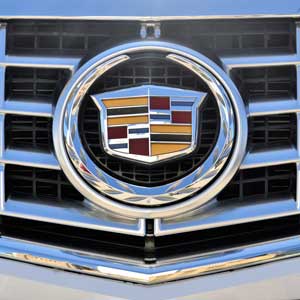Just pick my favorite colors, right?
When it comes to choosing brand colors, out of millions of colors, how can you possibly choose? We will take a look at this question, as well as color associations to consider, and take an in-depth look at how many colors and shades to choose for your brand identity. It might seem natural at first to want to pick your favorite colors and move on, however, it is best to research some common associations to colors and shades before you settle.
Primary, secondary and tertiary colors are just the start of options; there are shades and tints to choose from, as well. Before we dive into that, let’s talk about how many colors you need to have. Most often, three is the maximum number recommended for a color palette, and even a single color is plenty to help your brand be readily identifiable. Some examples of successful brands that use just one color are Twitter, LinkedIn, and Snapchat. Why is it successful? It is simple and memorable. Make it easy for your audience and they'll keep you in mind.
There are also plenty of brands that use more than one color in their palette and are just as successful. Google and Pepsi are good examples of successfully creating a recognizable brand using a larger palette. It really comes down to what your product is and how you can best represent it through creative color use. Which brings us to our next topic, associations of color as far as marketing research shows.
The word cloud in the image above shows some basic associations with color, and while they are not 100% accurate for everyone who will engage your brand, you will find that more often than not a majority of people will find these to be spot on. In addition, each color also has both positive and negative associations that go with it, so those are good to research and keep in mind when deciding your palette. Shades and tints will also pull your brand in one of the positive or negative directions, as well.
Let's start with Red and go through the rainbow. Typically, red is a high-energy color that encourages action and is very attention grabbing. It also tends to pull the mind toward hunger, so you see it often in food related brands like Wendy's, McDonalds, Red Robin and Red Lobster. As a negative, sometimes red can be seen as aggressive and straining for the eye and this is a good place to begin experimenting with shades and tints of red.
Orange is a color that evokes warmth, comfort and security. Moreover, it appeals to emotional and physical reactions. It is also highly energetic, like red, but with a more playful and less aggressive feel. Using a lot of orange can emit a sense of frivolity or immaturity, so it can be a good color for youthful brands but less impactful for a more mature or high-end brand.
Yellow is an uplifting color that emboldens the viewer and raises levels of confidence and optimism. In the right shade, yellow is a great way to make people feel good about their purchase or choice in your business and pushes them to come back for more. Like the color red, yellow also sends hunger signals and is another popular color for food joints and food labels in stores. Oscar Mayer, McDonalds and Nestlé’s Nesquick understand this concept and use these colors regularly in their packaging and branding.
Green sends a sense of freshness and vitality. It is the color of growth and abundance, and is often associated with environmental awareness brands. The appeal of green comes to us from a primitive level, because of its frequency in nature, especially in areas that are plentiful in water and vegetation. Overall, it brings a positive sense of harmony, but a wrong shade can evoke blandness and stagnation.
Blue is a color that emits a feeling of trustworthiness, communication and intelligence. It is soothing to our minds and has little effect on us physically the red and orange have. Blue is a color of the mind and cerebral matters and is the fan favorite time and again throughout many studies. Most of the brands that use a single color in their palette go with blue..
Violet or purple, speak to royalty and spirituality. A good color for higher thinking, it brings a feeling of contemplation, as well as introspection and self-reflection. The right shade can send a sense of style and quality but the wrong shade can bring about a sense of cheapness or inferiority.
That covers the basic colors of the rainbow, but there are many more colors to consider when choosing your own palette. Here is a good website that goes over some of the other colors we didn’t cover today, as well as some of the negative connotations that are associated with each.
Still having trouble choosing? Common Collective is happy to help you brainstorm ideas for your brand colors, if you just give us a text, call or email.
You can also live chat with us at commoncollective.com and we will be happy to help!
Call or Text 1-360-940-0147 or email info@commoncollective.com
Published By: Angela Jones
August 5, 2019

Cadillac or The Prius?
How fancy does your website need to be?
- Published By: Angela Jones
- Date: August 5, 2019